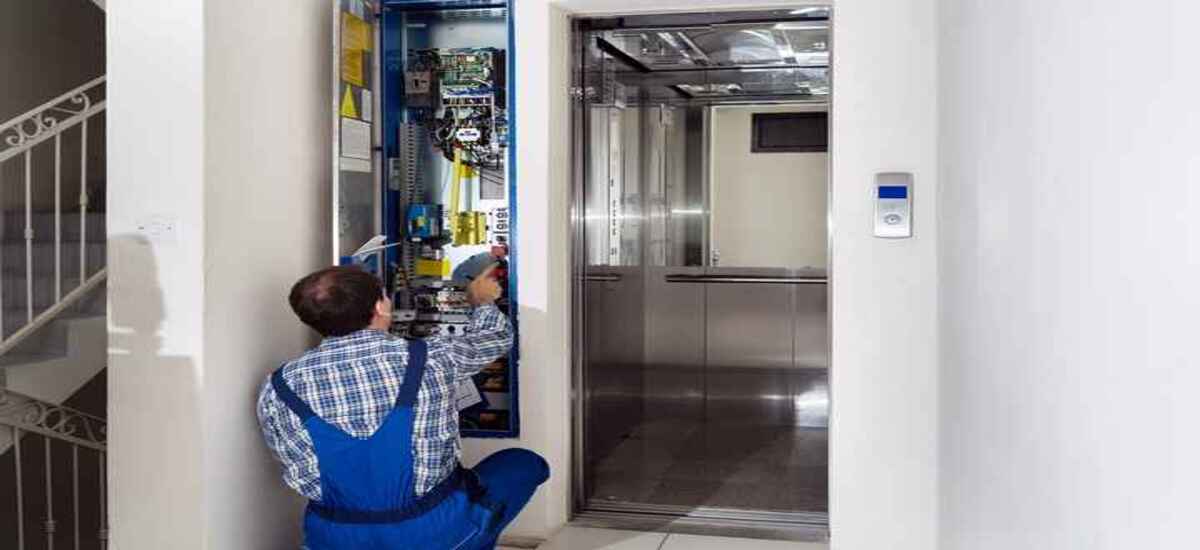Interested In Getting & Comparing Quotes For Your New Commercial Or Residential Lift? Click here!
Residential lifts and elevators can be a very important part of your home - especially for people with injuries or mobility challenges. These devices improve accessibility and convenience, allowing you to easily reach places that might otherwise be impossible for you to reach on your own.
However, the process of installing either a residential lift or a commercial one can be very complex. Considering the amount of work that is usually put into this installation process, any installer must work in line with a strict set of codes and guidelines. In Australia, the AS1735 code is the most encompassing and comprehensive set of lift and escalator installation guidelines.
Before you order a lift installation service in your home, compliance with the AS1735 standards is required. In this article, we’ll examine the standards, their meaning, and the requirements for anyone looking to install a commercial or residential lift.
What Is AS1735?
AS1735 is a guideline that covers the requirements for lifts to be installed in commercial and residential areas. It was developed by the Standards Australia Committee, and it was built to be an improvement over the AS 1735.1 standard, which was first introduced back in 2003.
The AS1735 standard was first implemented in May 2016, and it has guided installers and technicians looking to install lifts, escalators, and moving walks in commercial and residential areas ever since.
A few further points regarding some of the limitations of the standards are as follows:
-
The Australian Standards are guidelines and allow for variation as long as the same level of safety is provided.
-
The Standards have no legal authority within themselves but may acquire legal standing if they're adopted by a Statutory Authority, referenced as a standard in a contractural agreement and/or if the manufacturer claims compliance with the Standard.
- According to state work health and safety regulations, individual / private lifts are required to be registered as an item of plant. This registration is only granted if the lift complies with the intent of the relevant Australian Standards.
Common Compliance Requirements For Lifts And Escalators
The AS 1735 standard helps with several things - including and especially providing compliance responsibilities for lift installers in relation to accessibility and functionality. It defines several factors, including the interior accessories of home lifts, the sizes of the cars, and much more. This way, installers are better able to meet customers’ accessibility needs - especially in cases where the lift’s users have mobility challenges or disabilities.
The AS 1735 standard follows the Building Code of Australia and National Code standards. It considers several factors, including the following:
- Minimum lift dimensions and door opening width of lifts - especially considering wheelchair-bound users
- Lighting requirements
- Handrail-friendly walls
- In-car announcers (for visually impaired users)
- Car operating panels
- Signal and placement options
How Do You Know A Lift Is Safe To Operate?
One of the most significant postulations of the AS1735 standard is the procedure for determining whether a lift is safe to operate.
According to the standards, installers need to take certain measures into account to determine that a lift is ready to operate before it is placed into service. These include:
Validation:
A competent person is expected to validate the lift and ensure that it is installed following the manufacturer or designer’s instructions and recommendations.
This validation process usually includes a confirmation that the lift is operating per the design intent, and that all critical and safety functions are also performing according to the specifications.
Protective measures:
For the purpose of safety, the lift is also expected to have comprehensive protective measures. These measures should cover every aspect of the lift’s existence - from design and manufacturing to installation and even testing.
Compliance Standards
When testing for safety, lifts, and escalators will need to be checked against the following standards to ascertain their compliance:
- AS1735 series
- ASME A17.1/CSA B44.01
- ASME A17.7/CSA B44.7-07
- EN 81-1
- EN 81-2
- EN 81-20
- EN 81-50
- GB 7588
It is worth noting that these standards can’t be mixed.
Lift Installations
A new lift being installed will need to comply with the standards set above. However, if new technologies are being used in the design of the lift, the relevant components or subsystems will need to comply with the following:
- ISO 22559-1, ISO/TS 22559-2, ISO/TS 22559-3, ISO/TS 22559-4 and ISO 14798
- The components will also need to be in compliance with the European Lift Directive
- Finally, it is important to consider health and safety regulations - as well as state-based safety legislation
Lift Upgrades
Besides the function of installing new lifts, the AS1735 standards also set out requirements for upgrades being made to existing lifts. Generally, upgrades to existing lifts usually consist of the following:
The complete removal of an existing lift as well as replacement with entirely new equipment:
In this case, the new lift will need to comply with the AS1735 standards and be tested to ensure compliance.
A change or replacement of components or subsystems:
In this case, there is usually a mixture of old and new equipment. As expected, the new equipment will also need to be tested to ensure compliance with the AS1735 standards. However, it is also important to ensure that the new and old components are compatible with each other. So, safety checks should be conducted to verify this as well.
Safety Tests
Before an upgraded lift is placed back into service, technicians will need to ensure that it has passed safety tests and is now ready to work per the manufacturer’s specifications.
These tests could include compliance and functional safety tests for the subsystems or the entire lift system to ensure that all components are compatible - especially in light of the new upgrades that have been made.
Technical Standard Compliance
The components or subsystems being upgraded will also need to comply with the standards published above as applicable, while the components and subsystems that weren’t upgraded will need to maintain compliance with the standards to which the lift was initially installed.
To ensure the functionality of the entire system, installers will also need to test the interface between the existing components and the upgraded ones to ensure that they are safe and compliant. Primarily this interface will be assessed in accordance with the applicable global essential safety requirements (GESRs) of ISO 22559-1, using the risk assessment framework of ISO 14798.
Besides ensuring the new system's compliance, the risk assessment will also need to ascertain that no new risks have been introduced as a result of merging an old component with an upgraded one.
How Do You Ensure Compliance With AS 1735?
Making clear sense of the AS 1735 standard can be challenging - especially considering that lift installation locations can differ. However, if you’re an installer or you’re looking to get a lift installed in your home, here are a few things to keep in mind:
- You need to have a handrail located adjacent to the cabin operating panel (COP). The handrail should be 600mm long at the very least
- You will need floor dimensions measuring at least 1,100mm x 1,400mm
- Your lift should also come with an entrance protection system
- There needs to be a clear door opening measuring at least 900mm in width
- You need to have good lighting at the lift’s installation site
- There needs to be an emergency hands-free, self-dialing communication system. The communication system needs to be push-button initiated, and it should have audible feedback
- In the case of emergency communications being disabled, the lift system should have an alarm button for proper illumination
- The lift system needs a leveling accuracy of ± 6mm
- You will also need purposely designed car operating panels
- The system will need tactile, visible, and audible details about landings within the ar
Exceptions To The Rule
The AS 1735 standard covers lifts and escalators being installed in commercial and residential areas. However, it is worth noting that the standard doesn’t apply to the following:
- Temporary lifts and hoists that are used solely for erecting, demolishing, altering, or repairing
- Buildings or structures in which persons do not travel.
- Temporary lifts being used for carrying persons or persons and materials in building and construction work.
- Orchestral and stage lifts.
- Stacking machines, forklift trucks, and similar portable appliances.
- Conveyors used for the handling of materials and goods, such as tray elevators, bucket conveyors, and similar appliances.
- Skip hoists.
- Amusement devices
- Loading ramps and dock levelers
- Serial hoists
- Bridge lifting span lifts
- Railway car lifts
- Ropeways carrying passenger cabs or chairs
- Industrial platform hoists.
- Hoists used in taxis and people-moving road vehicles
- Building maintenance lifts
- Elevating work platforms
- Guided hoists
- Manually powered lifts
In closing, having a lift installed in your home or commercial building is a significant accessibility feature that benefits everyone. However, lifts and escalators are also complex devices. And with the amount of use they will get, you need to ensure that they are safe and ideal for all users.
In Australia, the AS 1735 standard is what ensures proper safety compliance for lifts and escalators. Whether you’re an installer or you’re looking to get these devices installed in your building, compliance with this standard is critical.
A Note On Shaftless/Through-Floor Lifts
-
-
This Standard specifies requirements for low-speed passenger lifts controlled by a constant pressure device.
-
It is intended that the Standard be applied only for lifts used primarily by persons with limited mobility.
-
This Standard is complementary to AS 1735.1, but, the requirements of this Standard take precedence over the corresponding requirements of AS 1735.1
-
Part 15 is more flexible/lenient than other parts of the lift code because it is written for low rise lifts for people with limited mobility.
Your Lift, Your Choice: Get & Compare Up To 3 Quotes From Professional Lift Installers To Save Time & Money. It’s Free!

